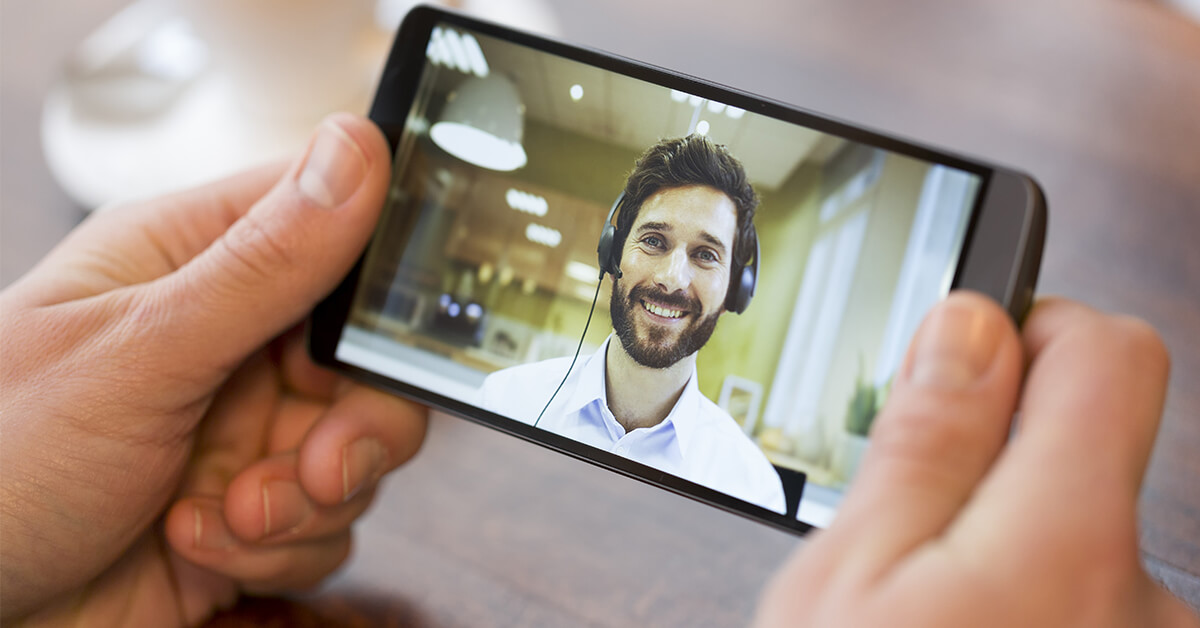Employee Communication App with Live Video
From AOL Instant Messenger to Slack, and everything in between, the employee communication app has been one of the most important parts of the corporate communication experience.
Let’s take a look at how the employee communication app has evolved over the years, and why today’s communication apps are improving both corporate communications and employee engagement and productivity.
The First Ever Employee Communication Apps
In 1951, Internet pioneer Douglas Engelbart was the first to envision collaborative software. He documented his vision in 1962, and held his first demonstration in 1968. The following year, Engelbart’s lab was incorporated into the ARPANET, which was a forerunner of what is known as the modern-day Internet. This incorporation allowed Engelbart, and his engineers, to access a broader database and a communications outlet.
Though Engelbart was the first to envision collaborative software — the precursor to the modern employee communications app — it wasn’t fully realized until 1978, when Roy Trubshaw at the University of Essex created a MUD (Multi-User Dungeon), thus realizing the first fully online “world” in existence.
In 1994, the United States Navy introduced the use of the COMPASS (Common Operational Modeling, Planning and Simulation Strategy), marking the first time that a military outfit incorporated the use of a communications app. Two years later, the Collaborative Virtual Workstation (CVW) was introduced and marked the first time that virtual file cabinets and chat rooms came into play. In 1998, the InfoWorkSpace (IWS) was adopted as the military standard.
Employee Communications App: Yesterday vs. Today
More than 20 years after the first collaborative software was introduced, the various apps operate much the same way, and all serve the same function: to keep company communications quick and efficient.
Today, with the rise of social media, and the shifting preference to mobile platforms, remote assistance software have adapted to the changing needs of various employees. Also, in an increasingly interconnected environment — with more workers working remotely than ever before — employee communications apps have become essential.
The employee communications app has become so essential to the company-wide experience that, according to the Harvard Business Review, failure to do so can cost the company about $500 million in productivity each year.
And while, in the development phase, employee communications apps were seen as detrimental to the corporate experience, several studies have confirmed that today’s employees see communications apps as essential to their work as remote IT support enhances the experience and productivity.
What To Look For in an Employee Communications App?
There are several traits that all of the best communication application have. For example:
Good employee communications apps are facile. What that means is that a good employee communications app allows for easy communication across the entire company, whether in-house or remote. They allow for such things as employee handbooks and company-wide announcements to be distributed with ease.
Good employee communications apps are practical. The modern employee communications app can allow for live remote assistance, such as access to micro-learning, internal communications, and live feeds of corporate announcements. Good employee communications apps also do not bog the employees down with extraneous processes and communications.
 Good employee communications apps have mobile capabilities. As today’s employee becomes increasingly mobile, their communications apps have to be able to adapt to mobile and “smartphone” platforms without becoming intrusive. In other words, while it’s important for an employee to be able to access his/her employee communications app from his/her smartphone, it cannot take over other processes on the phone, or disrupt the employee outside of business hours except in the event of an emergency. This means, then, that push notifications should be able to be turned off.
Good employee communications apps have mobile capabilities. As today’s employee becomes increasingly mobile, their communications apps have to be able to adapt to mobile and “smartphone” platforms without becoming intrusive. In other words, while it’s important for an employee to be able to access his/her employee communications app from his/her smartphone, it cannot take over other processes on the phone, or disrupt the employee outside of business hours except in the event of an emergency. This means, then, that push notifications should be able to be turned off.
Good employee communications apps have augmented reality features. This is particularly important in a remote setting, where not every employee uses the same platform. A recent study has confirmed that, for the first time in history, mobile devices are used more often than desktop and other non-mobile devices, making it all the more imperative for the employee communications app to have multi-platform functionality.
Good employee communications apps have ease of use. Companies that have a multi-generational workforce will attest that having an app that is quickly adopted by millennials and baby boomers with the same aplomb is essential to keeping their workforce both happy and functional.
Good employee communications apps have multiple methods to allow the leader to communicate with their employees. Apps that allow the leaders and heads of teams to communicate via augmented reality tools, for example, are better than those that simply have “chat” capabilities.
Blitzz: Your New Employee Communications App!
Blitzz’s remote assistance software provides a visual collaboration platform that allows for increased efficiency and productivity amongst your workforce. By empowering our users with both rich augmented reality and AI, we’re able to help you solve any problem in a timely and cost-efficient manner. For your free demonstration, or to find more information on how our proprietary employee communications app can work for you, contact us today.



